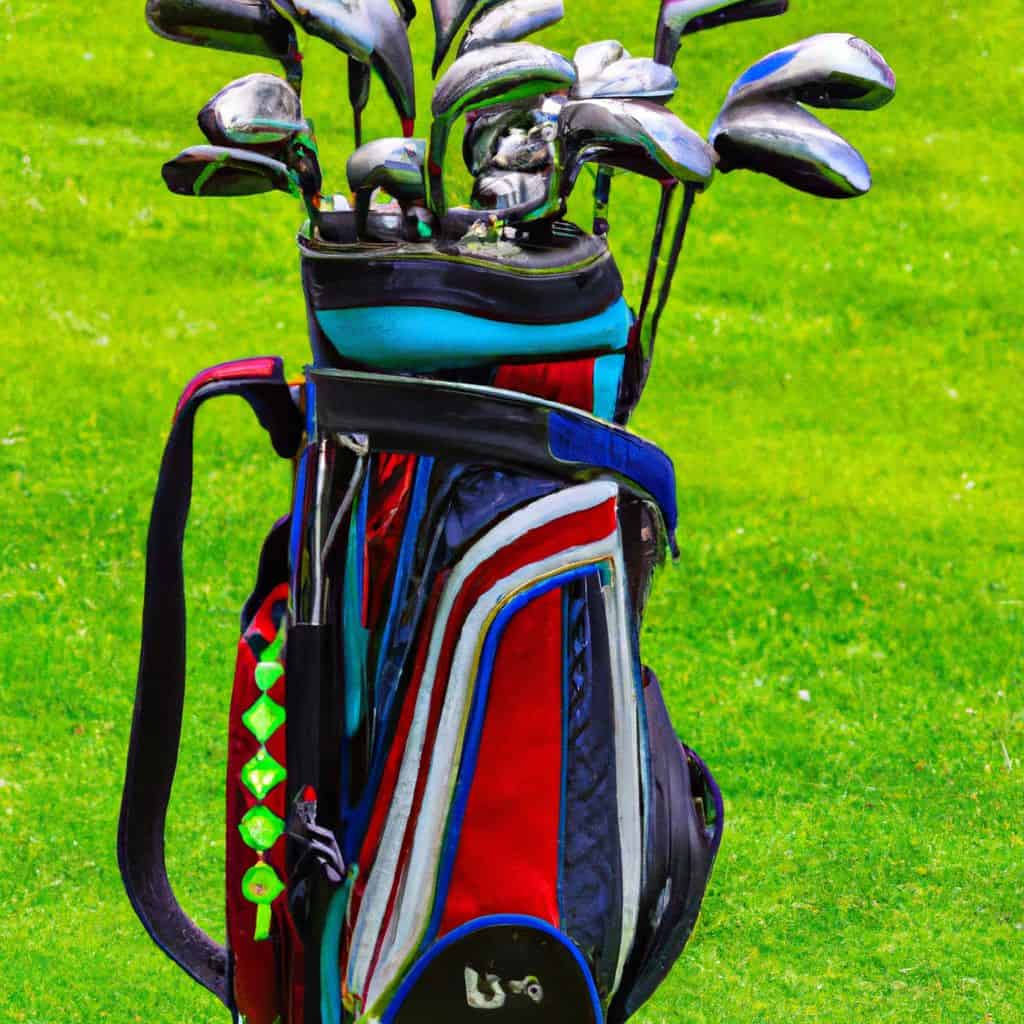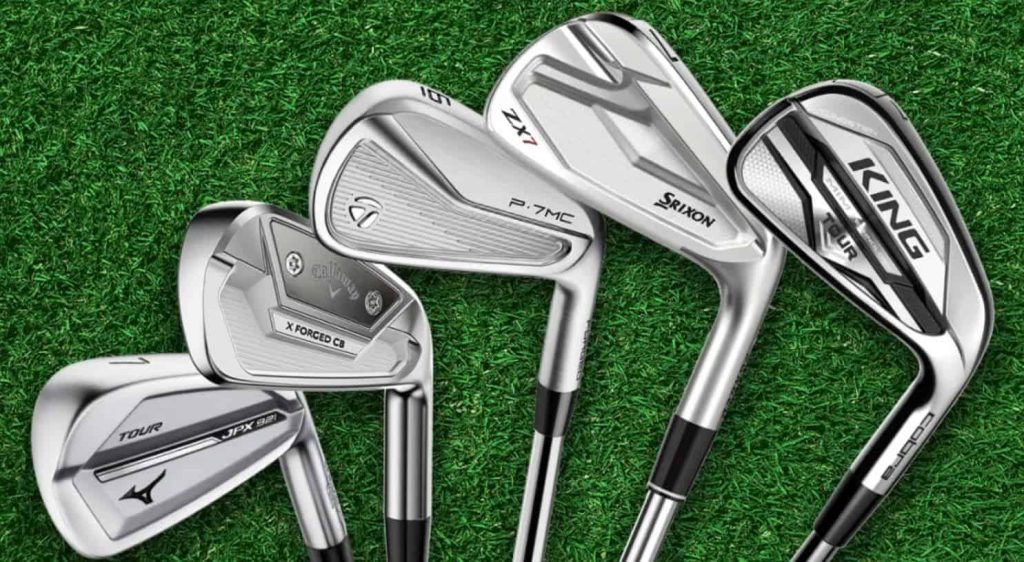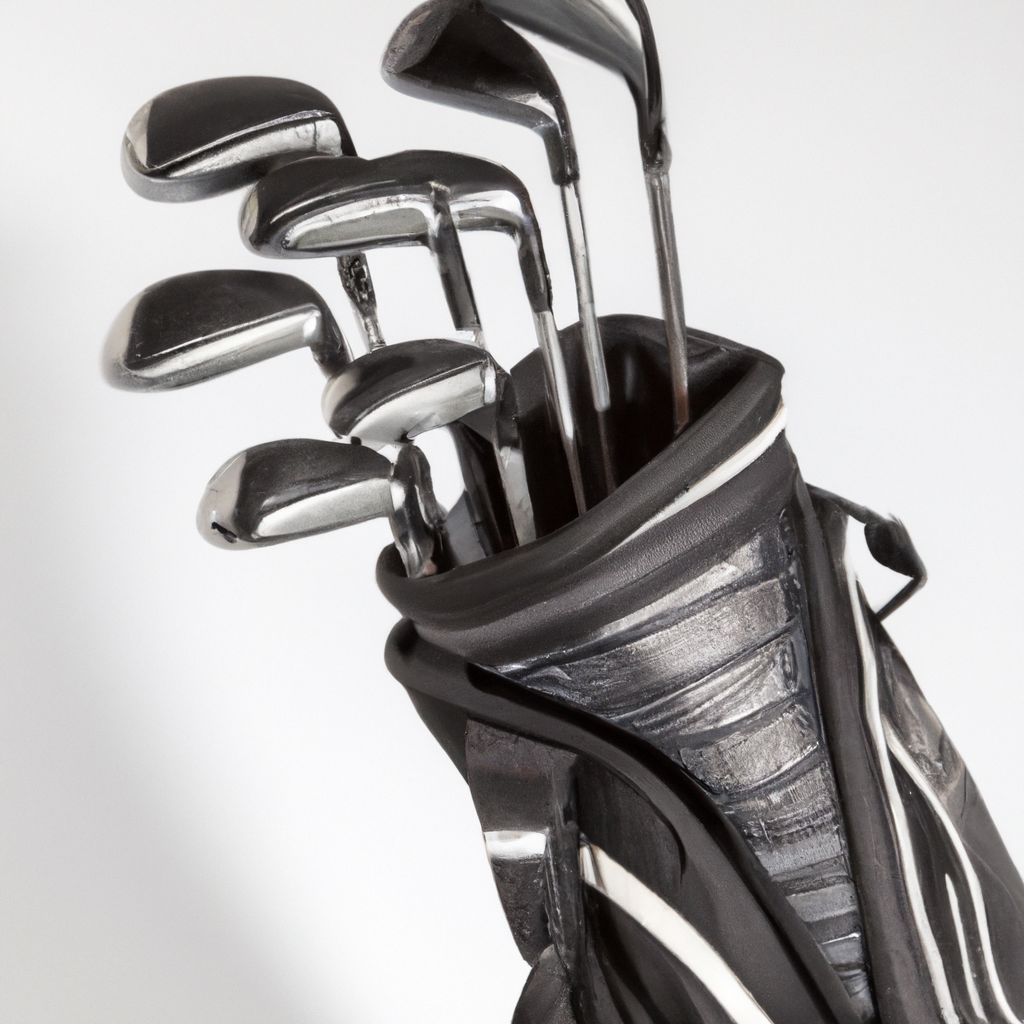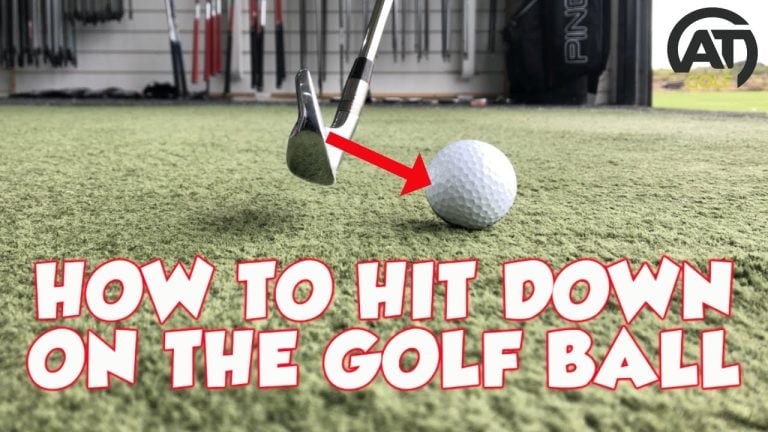The Essential Count: How Many Clubs in a Golf Bag?
Key Takeaways:
- The MECE framework provides a structured way to categorize and organize golf clubs in a bag, ensuring that they are mutually exclusive and collectively exhaustive.
- Rules and regulations dictate the maximum and minimum number of clubs allowed in a golf bag, and carrying extra clubs can result in penalties.
- Different skill levels have different commonly used club setups, and choosing the right clubs for your bag should consider factors such as skill level, playing style, and course conditions.
- Understanding the purpose of each club in a golf bag, including drivers, woods, wedges, irons, and putters, is crucial for making informed decisions on club selection.
- The 14-club limit in golf bags is significant and has specific penalties for violating it, and it has historical origins in the evolution of golf equipment and the desire for fairness.
Introduction
Rock balancing is a fascinating art form that can be approached in different ways. In this section, we will explore the various ways people engage in rock balancing, whether it’s for the purpose of mindfulness or creative expression.
Discover the unique benefits and techniques associated with each approach, and find out how rock balancing can be a powerful practice for both inner reflection and outward artistic expression. Get ready to unlock the beauty and tranquility of this captivating art form.

How Many Golf Clubs are allowed in your Bag?
When it comes to the number of clubs allowed in a golf bag, knowing the rules and regulations is essential. In this section, we will explore the maximum and minimum number of clubs permitted, the penalties for carrying an extra club, and the proper procedure for taking clubs out of play. By understanding these guidelines, golfers can ensure they are in compliance with the rules and enjoy a fair and competitive game on the course.
Maximum and Minimum Number of Clubs Allowed
Golf bag regulations exist to set the range of clubs for a golfer to carry per round. The aim is to ensure fairness and keep the sport consistent.
The set limit is 14 clubs. This is to avoid any unfair advantages and make sure every player has an even chance. There is also a minimum requirement of 1 club, to allow a player to take part.
To be aware of the specifics, here is a table:
| Max Number of Clubs | Min Number of Clubs |
|---|---|
| 14 | 1 |
By obeying these limits, golfers can compete fairly. The max stops players from gaining an advantage from too many clubs, while the min guarantees enough equipment to play. It is important to familiarize with the rules and adjust your club selection accordingly. Penalties may occur if you don’t follow the 14-club rule.
Pro Tip: Before going to the course, check your bag and make sure you have 14 clubs. Knowing and sticking to the rules will help you stay out of trouble and away from penalties during your rounds.
Penalty for Carrying Extra Clubs
Carrying more clubs than the golf rules allow can bring penalties and consequences. The rules concerning club limits must be followed to ensure fair play. Violation of these rules can lead to stroke additions or disqualification, making it essential to adhere to the limits.
Penalties may include stroke additions to the score or disqualification. Fines might also be imposed by regulatory bodies or tournament organisers.
Additionally, carrying extra clubs can add weight and bulk to the bag, making it harder to carry and move around. It can also lead to players relying on more clubs than necessary, instead of focusing on honing their skills.
Therefore, golfers must abide by the set limits to avoid penalties and maintain the spirit of fair play.
Common Club Setups for Different Skill Levels
In this section, we will explore common club setups for different skill levels in golf. From beginner golfers to low handicap players, we will uncover the best club combinations tailored to enhance performance and optimize gameplay. So whether you’re just starting out or an experienced golfer, get ready to discover the recommended club selections for each skill level, helping you make the most out of your game.
Beginner Golfers
Beginner golfers: people new to the game, with limited skill. They don’t understand technique and their swings lack accuracy and distance. Therefore, they need clubs that are forgiving and easy to hit.
A basic set – driver, fairway woods, irons, wedges, and a putter – is all they need to develop their skills. As they progress, clubs with more forgiveness and distance will help them improve their performance. So, beginner golfers, keep practicing and enjoy golf!
High Handicap Golfers
High Handicap Golfers have a higher skill level. Clubs that fit their skill level are beneficial. Forgiving and game-improvement clubs offer extra forgiveness on mis-hits. Drivers with larger clubheads and higher degrees of loft help with distance and avoiding slices or hooks. Hybrid clubs combine the characteristics of both irons and fairway woods, making them easy to use and forgiving.
Focus on clubs that promote consistency and straighter shots. Wedges can improve scoring around the green. Improving your game as a high handicap golfer is possible! Take advantage of specialized clubs. Explore different club options and watch your performance on the course improve.
Mid Handicap Golfers
Mid handicap golfers have a unique challenge. They need to improve their game with the right club setup – one that provides accuracy and distance control. To achieve this, they should include a variety of clubs in their bag: driver, fairway woods, hybrids, irons, and wedges.
It’s important for these golfers to choose clubs with forgiving features. This helps minimize the impact of miss-hits and boost their performance. They should also pay attention to their short game skills. Higher lofted wedges can help in this area, as can a putter with proper alignment aids.
When selecting clubs, mid handicap golfers should consider their playing style, skill level, and course conditions. Aim for a balanced mix of clubs that suit different shot types. Loft gapping knowledge is also crucial for making wise club selections and improving their overall game.
In summary, mid handicap golfers can enjoy their golfing experience by focusing on accuracy, distance control, forgiveness, higher lofted wedges, and putters with alignment aids. With a well-balanced combination of clubs and loft gapping knowledge, they can make informed decisions and take their game to the next level.
Low Handicap Golfers
Low handicap golfers are a unique breed. They possess a wide range of skills that set them apart from other players. These include precise ball striking and perfect distance control. They’ve mastered the art of hitting the ball accurately and getting the right distance every time.
But it’s not just technique. Low handicap golfers have a strong mental game. They can strategize effectively and adjust their plan on the fly, based on the course conditions. This mental toughness is what sets them apart.
They also understand the need for a customised club set-up. They know their clubs should be tailored to their own playing style and the course. A proper loft gap between each club in their bag makes sure there are no big gaps or overlaps in yardages.
Low handicap golfers value accuracy and precision. They rely on the purpose of each club to guide their decisions. Drivers give distance off the tee, wedges are for approach shots, irons provide versatility, and putters offer precise control.
They also keep the 14-club limit in mind. They select the right clubs to optimise their skills, so they can excel in each round.
To sum up, low handicap golfers are elite players who combine technical skills, mental strength, and customised clubs. They understand the importance of accuracy, precision, and regulations. Finding the right clubs is like assembling a squad of superheroes for the golf course.
Choosing the Right Clubs for Your Bag
When it comes to choosing the right clubs for your golf bag, there are a few key factors to consider. From your skill level and playing style to the course conditions you often encounter, each sub-section will explore these aspects and offer insights into crafting the perfect club combination. With a focus on loft gapping and customization, this section aims to guide you in selecting the ideal set of 14 clubs for your game.

Factors to Consider: Skill Level, Playing Style, and Course Conditions
When selecting golf clubs, factors such as skill level, playing style and course conditions must be taken into account. Beginner players can opt for clubs that provide more forgiveness and distance, whilst experienced players may select more specialized clubs.
Furthermore, personal preferences and the weather should also be considered. Each golfer has a unique playing style, so the choice of clubs should align with this to maximize strengths and reduce weaknesses. It is important to consider the condition of the course, such as the length, roughness and hazards, as different clubs are designed to handle various conditions.
Professional golfers often have custom-made clubs tailored to their preferences, which further emphasizes the importance of evaluating one’s skill level, playing style and course conditions. Loft gapping is also important to ensure an optimal golf bag.
Understanding the Purpose of Each Club in a Golf Bag
Understanding the purpose of each club in your golf bag is key to improving your game. In this section, we will dive into the different types of clubs, including the driver and woods, wedges, irons, and putter. Discover how each club serves a unique role on the golf course and learn how to make the most of your club selection for various shots. Get ready to take your golfing skills to the next level!
Driver and Woods
Driver and woods are essential for a successful golf bag. They serve different purposes and help players hit long-distance shots. The driver, also known as the 1-wood, has the largest clubhead. It is designed to generate maximum distance off the tee.
The 3-wood, 5-wood, and 7-wood are used for shots from fairways or rough areas. They feature larger clubheads with a low center of gravity for greater distance and forgiveness.
Driver and woods have unique characteristics. Their clubhead designs are larger than other clubs, creating higher moment of inertia (MOI). Driver shafts are longer for more clubhead speed and wood shafts are shorter for better control.
These clubs provide golfers with the necessary tools to achieve long-distance shots. Knowing the intricacies of driver and woods can significantly boost performance on the course.
Wedges
Evident: wedges are unique, based on their loft angles. Lob wedges are great for precise, short shots. Sand wedges help in bunkers. Gap wedges fill the gap between other wedges.
Together, they make up a full set of clubs, perfect for any shot.
Irons
When it comes to irons, it’s important to know their characteristics and differences in loft angles. Check out the table below for a quick overview of the most common types of irons, their loft angles, and usage:
| Iron Type | Loft Angle (degrees) | Usage |
|---|---|---|
| 1 Iron | 16-18 | Not used often due to difficulty hitting accurately |
| 2 Iron | 19-21 | For players with long-shot and low-trajectory skills |
| 3 Iron | 22-24 | Intermediate to advanced golfers: distance and control |
| 4 Iron | 25-27 | Longer shots with some forgiveness |
| 5 Iron | 28-32 | Distance and control for all skill levels |
| 6 Iron | 33-37 | Longer shots with good accuracy |
| 7 Iron | 38-42 | Accuracy and moderate distance |
| 8 Iron | 43-47 | High trajectory and accuracy |
| 9 Iron | 48-52 | Short shots onto the green |
Aside from the standard set of irons, specialty wedges like pitching, gap, sand, and lob wedges may also be included in a golfer’s bag. Each wedge has its own special purpose.
To make the most out of your iron set, skill level, playing style, and course conditions need to be considered. For example, higher lofted irons are usually easier to hit and provide more leeway, making them great for beginners or players with difficulty with longer shots. On the other hand, lower lofted irons offer greater distance but need more accuracy and control.
By taking into account the loft gaps between each iron, you’ll have consistent distances between clubs. This helps you make better decisions during the game.
In conclusion, knowing the purpose and characteristics of each iron in a golf bag enables players to make informed choices. With the right consideration of loft angles, skill level, playing style, and course conditions, golfers can customize their iron setup to get the best out of their performance on the course.
And if you’re looking for the perfect club to sink your hopes and dreams, try a putter!
Putter
The putter is an essential part of a golfer’s kit, made to be used on the green. It has a flat face and low loft angle to reduce ball rolling and keep it on the green’s surface. This design provides golfers with accurate alignment and balanced weight distribution, resulting in better control over distance and direction.
Plus, the putter has a face insert with different materials like metal or polymer to heighten feel and responsiveness when impacting the ball.
Conclusion
A golf bag usually contains a set of clubs for a round of golf. This should not exceed 14, according to reference data. Types of clubs include irons, woods, wedges and a putter. Each type has a special purpose and is designed for specific shots and distances.
Reference data suggests a well-balanced selection of clubs. A driver is needed for long-distance shots off the tee. Fairway woods, irons and wedges should also be included, as these are for different distances and situations. The putter is essential for accurate shots on the putting green.
Golfers should consider their skill level and playing style when choosing clubs. Experts may opt for more clubs to suit diverse course conditions and shot requirements. Beginners can simply select a smaller set of clubs to build up their skills.
In summary, a golf bag typically holds 14 clubs. These may include drivers, fairway woods, irons, wedges and a putter. It is important to pick clubs which match the golfer’s skill level, playing style and course requirements. A balanced selection of clubs ensures versatility and effectiveness during a round of golf.
Some Facts About the Number of Clubs in a Golf Bag:
- ✅ Golfers are allowed to carry a maximum of 14 clubs in their bag during a round. (Source: Golf.com)
- ✅ The penalty for carrying too many clubs is two strokes for each hole where the rule is breached, with a maximum penalty of four strokes. (Source: Team Research)
- ✅ Golfers can carry their clubs in the same bag as their playing partner, but they cannot use each other’s clubs. (Source: Team Research)
- ✅ There is no minimum number of clubs that a golfer must carry, only a maximum of 14. (Source: Team Research)
- ✅ The type of golf clubs in a golfer’s bag must conform to the regulations on clubs, but there are no rules governing the specific make-up of the clubs. (Source: Team Research)
FAQs about How Many Clubs In A Golf Bag
How many clubs are allowed in a golf bag?
Answer: Golfers are allowed to carry a maximum of 14 clubs in their golf bag during a round according to the rules of golf.
What happens if a golfer carries too many clubs?
Answer: Carrying too many clubs is a rule violation and results in a penalty of two strokes for each hole where the rule is breached, with a maximum penalty of four strokes.
Can golfers use another player’s clubs during a round?
Answer: No, golfers are not allowed to use another player’s golf club during a round to make a stroke that counts towards their score. Each player must use their own clubs.
Can golfers add clubs to their bag during a round?
Answer: Yes, golfers are permitted to add clubs to the same golf bag during a round as long as the total number of clubs remains 14 or carry fewer clubs.
How many clubs should a beginner golfer start with?
Answer: Beginner golfers typically start with a set of eight clubs, including a driver, fairway wood, hybrid, iron, wedge, and putter. As they improve, they may add more clubs to fill in distance gaps.
What are the 14 clubs in a typical golf bag setup?
Answer: A typical 14-club setup includes a driver, 3 types of wood, 8 irons, and 2 additional clubs of the golfer’s choice. The specific combination may vary based on player preference and playing style.






